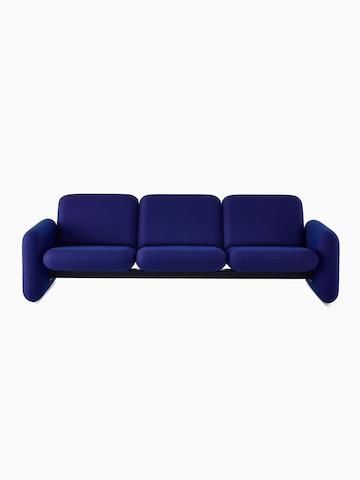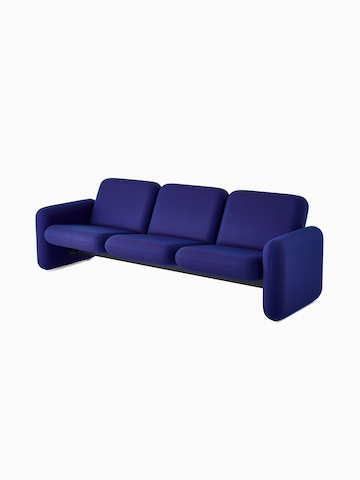But first Wilkes had to get past Hilda Longinotti, Nelson’s longtime aide.“I walked in and said I wanted to meet George Nelson and she said, ‘You can’t do that! Get out of here!’ It turns out that before I walked in, they’d had a big argument,” Wilkes says, so Longinotti wasn’t in the mood to be helpful.
Once Wilkes was indoctrinated into the Nelson universe, he quickly made an impact. “Always sharp as a tack and very witty,” says Lance Wyman, a colleague from Nelson Office days, describing Wilkes. One of Wilkes's first projects involved troubleshooting the design of the Herman Miller-produced Sling Sofa, now housed in the Museum of Modern Art’s permanent collection. “They were having problems with the upholstery where it attaches to the frame,” he says. “I did some research: There was an English company that made rubber sheeting, so I attached that [under the cushions] instead of webbing.”
A decade later, Wilkes ended up in Michigan, working full-time for Bob Blaich, Herman Miller’s then-design director, who had recognized Wilkes from his time with Nelson. He designed his Modular Sofa Group (1976) while experimenting with new foam-injection technology that created smooth, contoured shapes, which could be upholstered with Herman Miller’s two-way-stretch fabrics.
As with the Eameses and their molded plywood, the technology informed the resulting design. When upholstered in bright colors (a color palette that had been designed by Alexander Girard), the square cushions with rounded edges looked like Chiclet gum, giving the sofa its nickname. The iconic postmodern design became highly prized on the vintage market in the decades since its introduction—and, with its reintroduction in 2021, it has gained a new following among design enthusiasts.
While at Herman Miller, Wilkes also designed a coffee table to complement the Modular Sofa Group collection, Soft Seating (1974), and the adjustable-height Rollback Chair (1977), which was profiled by the New York Times in its NeoCon coverage that year.
Since leaving Herman Miller, he has worked as a design consultant with companies in England, Europe, and the U.S.
Wilkes was born in Surrey, England, and received his design degree from the Royal College of Art in London.
“Minimalism isn’t just about straight lines. The most important thing is the form and the simplicity of making it.”
—Ray Wilkes


